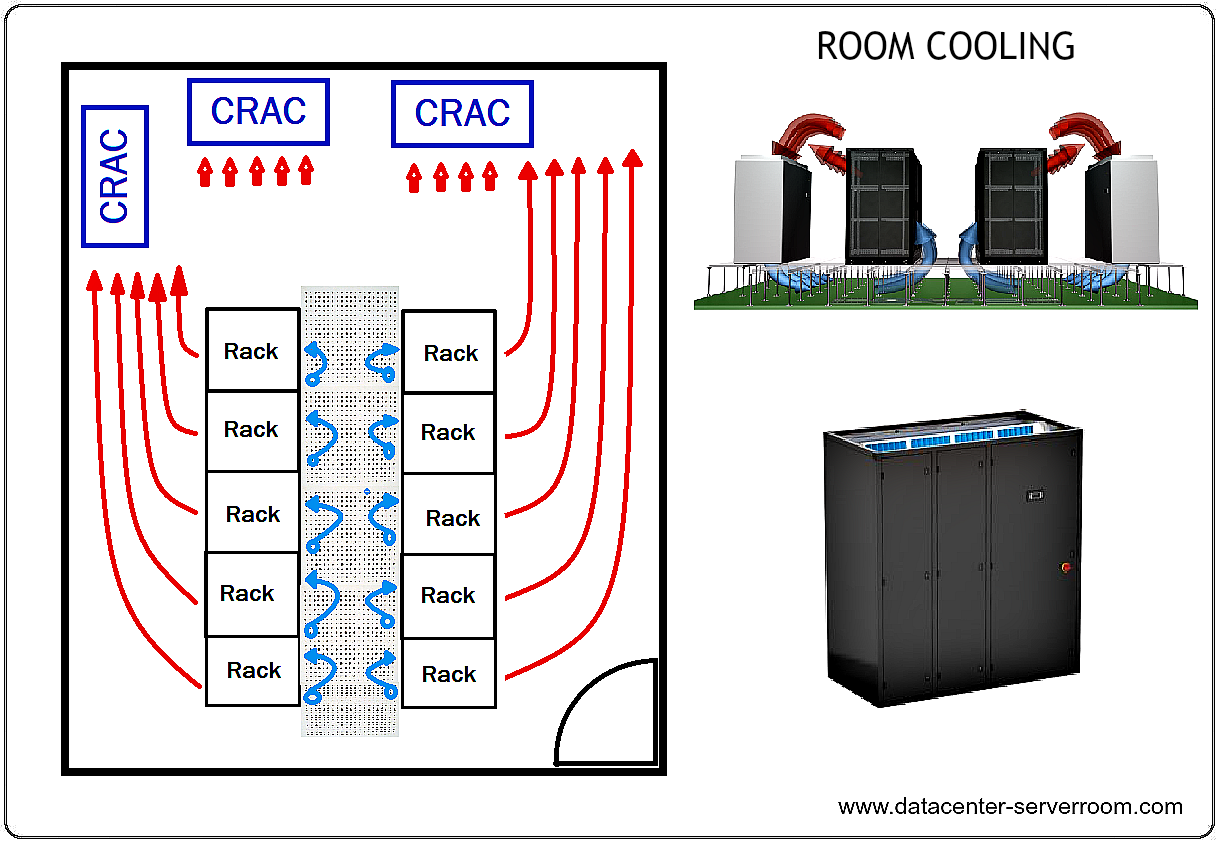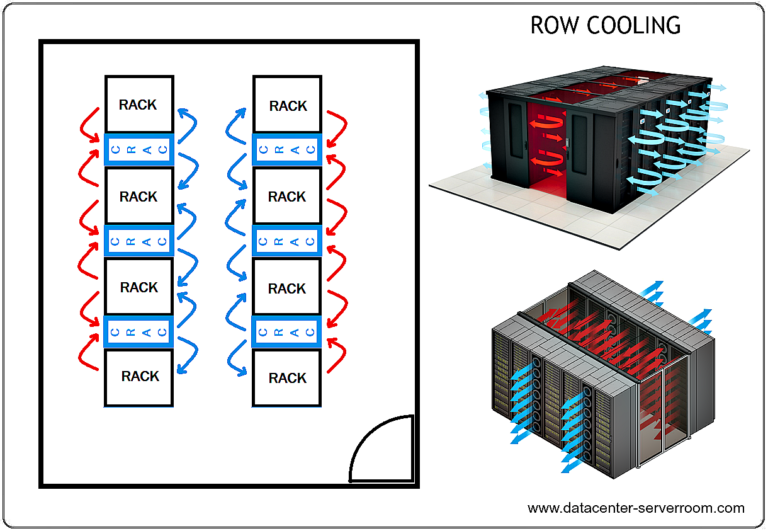DATA CENTER COOLING
Introduction to Server room Cooling:
If we go to very basis questions of what is data center cooling?, why it is needed? and how to do this cooling? it will unable us to understand this topic very well. Any datacenter is equipped with various IT equipment and especially server. Servers are feeded with electric power, and when servers are at work it generates heat. If number of server are more then temperature inside datacenter increases which can damage server itself. Due to new thin blade servers, more servers can accommodate in single rack which leads to high heat density. It is very important to remove this heat generated to avoid breakdown of server and to increase life of servers. Data center cooling is nothing but removing heat generated by IT equipment especially servers from datacenter. Computer room Air conditioner or CRAC unit or Precision air conditioner are specially designed Data center cooling system used for server room cooling. CRAC server room air conditioner not only control temperature but also humidity to set level with maximum precision.
Here we need to make note of fact that too high or too low temperature and humidity in datacenter is undesirable. Too high humidity can cause condensation while too low humidity can cause electrostatic discharge. CRAC units controls both temperature and humidity.
Types of Server room Cooling Methods.
To remove heat from datacenter, we need to select cooling system which has capacity to remove total heat generated in datacenter and also it should ensure that cooling should reach to all IT equipment. Which mean Cooling systems function is not only to provide cooling capacity but also to distribute cold air to all IT equipment. Based on methods of how cool air distributed, data center cooling mainly divided into three types i. e. Room Cooling, Row Cooling and Rack Cooling. For given server room cooling capacity of cooling system will be almost same . But air distribution will be different. Let's see these methods in detail.
Room Cooling
This is conventional method of datacenter cooling in which CRAC unit capacity selected to server total heat load in room. CRAC unit has free supply of cold air and free return path. There is no Ducting, dampers or vent in air distribution. Due to this, cold air might return to CRAC without removing heat from IT load. Hence CRAC unit not get utilized to its full capacity. However this issue can be solve with help Hot Aisle and Cold Aisle containment. In Datacenter having raised floor with down flow CRAC unit, Cold aisle containment is recommended to direct flow of cold air in front of racks. While for datacenter without raised floor, hot aisle containment is recommended to direct return hot air to CRAC without mixing with cold air. Room cooling design depends on size & shape, ceiling height, rack layout & hence any alteration in might effect performance.

Row Cooling
In this method CRAC is positioned between the racks and hence supply and return path of air get shorten which increases efficiency of cooling system and full capacity of CRAC get utilize. Also it reduced overall power consumption by CRAC due use of lower capacity of blower. This method is very much useful for high density load datacenter. This method does not need raised floor. Datacenter get more flexibility with this method. If existing datacenter need to upgraded with high density server, then row cooling is easiest cooling method to implement. Cooling redundancy can be built for specific rack instead of whole datacenter which reduces cost. Efficiency further can be increase with use aisle containment. This method recommended for high density datacenter using more than 5KW per rack.

Rack Cooling
As we discussed before it is very important to transport heat generated by IT equipment in datacenter to outside to avoid failure if IT equipment and to increase their life. Depending on medium used to transport heat generated inside datacenter to outside, Datacenter cooling is broadly divided into three major categories. These are Air Cooled System, Chilled water cooled System, Free cooling System. In addition to these categories there are many more methods like water cooled system, Glycol cooled system which are rarely used.
Chilled Water System:
In this system medium to transport heat generated inside datacenter to outside environment is chilled water. Chilled water having temperature of 5 to 7 deg C supplied to indoor AC unit from Chiller. AC unit inside datacenter transfers heat generated by IT equipment to this chilled water due to which temperature of returning chilled water increases. This this hot returning chilled water forced back to chiller and hence it removes heat from Datacenter. Chiller rejects heat from this returning chilled water and again generates chilled water to force back to indoor AC unit to remove more heat from datacenter. This cycle gets repeated. Chiller can be of different types depending on method and medium they it uses. Water-cooled chiller removes heat from returning chilled water by condenser water loop which then cooled by using cooling tower. Glycol-cooled Chillers removes heat from returning chilled water by using Glycol and dry coolers. Air-cooled Chillers rejects heat from returning chilled water by air cooled condenser integrated with chiller.
How it is different than comfort cooling?
Recommended cooling for Datacenter
